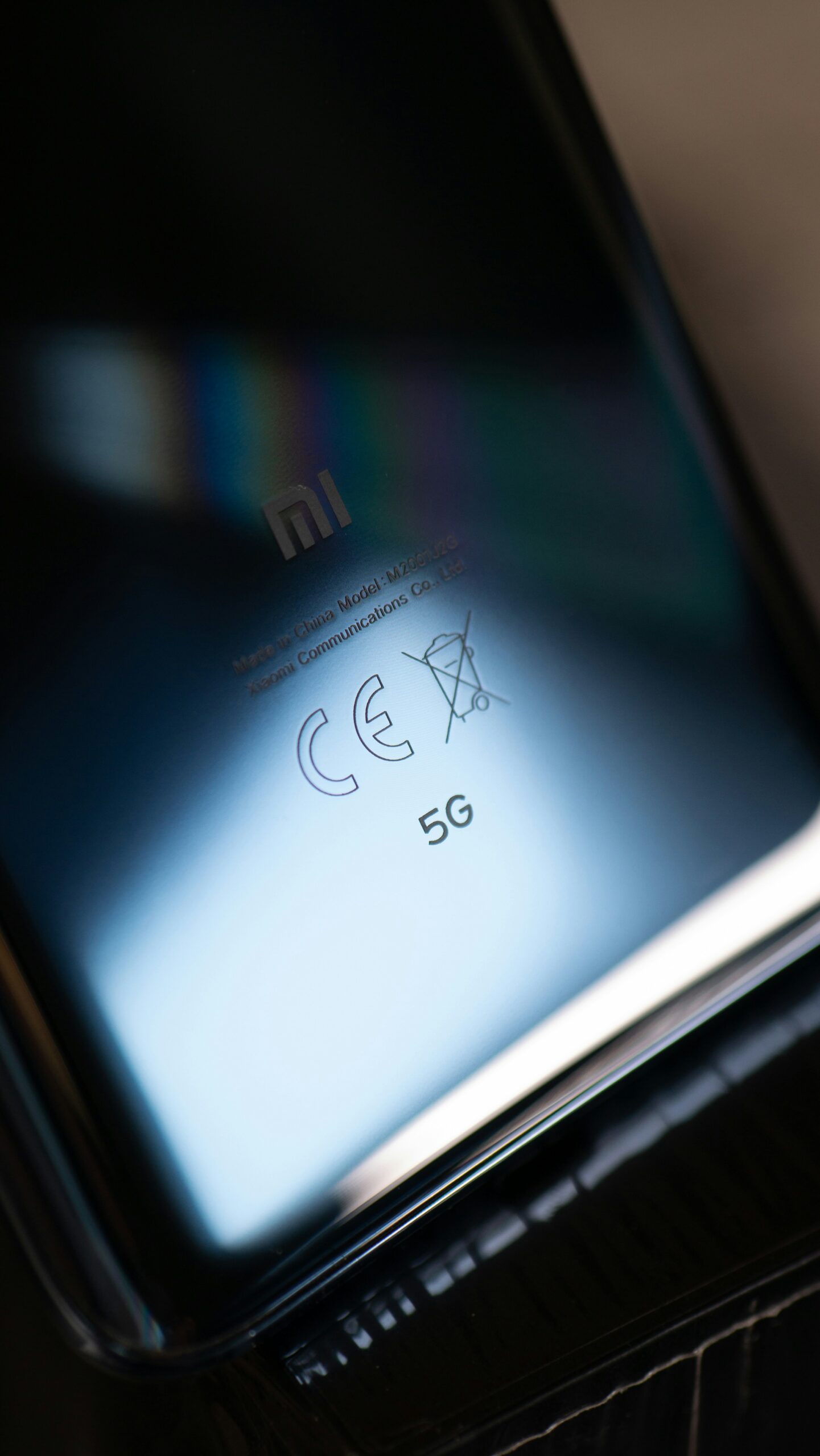
Introduction to 5G Technology
The emergence of 5G technology marks a significant advancement in mobile network capabilities, building upon the established foundations of previous generations, such as 2G, 3G, and 4G. Each iteration of mobile networking has contributed distinct enhancements; however, 5G stands out due to its comprehensive objectives and revolutionary potential. In essence, 5G technology focuses on delivering unprecedented levels of speed, drastically reduced latency, and a substantial increase in the number of devices that can be connected simultaneously.
At its core, 5G technology operates through a combination of advanced technologies, including massive MIMO (Multiple Input Multiple Output), millimeter waves, and network slicing. These innovations enable 5G to achieve peak data rates—potentially exceeding 10 Gbps—far surpassing the capabilities of its predecessors. Unlike 4G, which primarily aimed at improved browsing and streaming experiences, 5G sets its sights on a much broader spectrum of applications. This not only encompasses improved mobile internet access but also targets emerging technologies such as the Internet of Things (IoT), smart cities, autonomous vehicles, and augmented reality.
Another vital feature of 5G technology is its reduced latency, which refers to the time taken for data to travel from the source to the destination. While 4G latency typically hovers around 30 to 50 milliseconds, 5G aims to shrink that to just 1 millisecond. This drastic reduction opens up new possibilities for real-time applications, including remote surgeries and critical communications, which can now occur with a timely responsiveness that was previously unattainable.
Overall, the 5G revolution promises not only a leap in connectivity and technological capacity but also a transformative impact across various sectors. As 5G technology continues to roll out globally, it is anticipated to serve as the backbone for future innovations, enhancing the way we interact with technology and the world around us.
The Technical Advancements of 5G
The advent of 5G technology heralds a groundbreaking leap in the world of telecommunications, primarily driven by several key innovations. One of the most significant advancements is the utilization of millimeter waves, which operate within the frequency range of 30 GHz to 300 GHz. These higher frequency bands enable the transmission of larger amounts of data at significantly faster speeds compared to previous generations. However, because millimeter waves have a shorter range and are more easily obstructed by physical objects, they necessitate a more intricate network infrastructure to ensure comprehensive coverage.
To address the limitation of range and signal penetration posed by millimeter waves, small cells play a crucial role in the deployment of 5G networks. Small cells are low-powered wireless access points designed to enhance coverage and capacity in densely populated areas. By strategically positioning these small cells throughout urban environments, telecommunications providers can effectively extend the reach of the 5G signal, ensuring minimal dead zones and improved connectivity for users. This dense network of small cells represents a significant departure from the traditional reliance on large cell towers used in earlier generations.
Additionally, 5G technology incorporates massive MIMO (Multiple Input Multiple Output) systems, which enhance overall capacity and efficiency. Massive MIMO operates by employing a larger number of antennas at the base station, allowing for multiple simultaneous data transmissions. This approach not only increases throughput but also improves energy efficiency, making better use of available spectrum resources. The combination of these advancements—millimeter waves, small cells, and massive MIMO—allows 5G to support a diverse range of applications, from enhanced mobile broadband to the burgeoning Internet of Things (IoT), thereby transforming the landscape of technology and connectivity.
Impact on IoT and Smart Devices
The advent of 5G technology marks a significant evolution in the Internet of Things (IoT) landscape, expanding connectivity capabilities and providing unprecedented opportunities for innovation. With the ability to support a higher density of connected devices, 5G facilitates an environment where millions of IoT devices can operate seamlessly in real time. This enhancement is critical for numerous applications, from smart homes to industrial automation, allowing devices to communicate with each other more efficiently and effectively.
In smart homes, 5G connectivity enables a broader array of devices to be interconnected, from security systems to smart appliances. The instantaneous data transfer rates provided by 5G technology enhance the functionality of these devices, resulting in improved user experiences. For instance, smart thermostats can adjust settings based on real-time environmental data, while security cameras can transmit high-definition video streams with minimal latency. This level of responsiveness was difficult to achieve with previous generations of network technology, illustrating how 5G redefines operational efficiency in smart environments.
Furthermore, the industrial sector stands to gain immensely from enhanced IoT capabilities driven by 5G. Predictive maintenance, asset tracking, and automation are some areas where 5G can streamline operations, reduce costs, and improve productivity. As industries adopt smart sensors and connected machinery, the resulting data analytics can lead to more informed decision-making and increased operational transparency. This shift towards a highly connected industrial ecosystem exemplifies the transformative potential of 5G in enhancing both efficiency and automation.
In conclusion, the integration of 5G technology within the IoT ecosystem promises significant advancements in both user experience and operational capability. As this revolution unfolds, the capacity for simultaneous connections will stimulate innovation across various sectors, paving the way for a more interconnected world.
Enhancements in Mobile Experience
The introduction of 5G technology marks a transformative shift in mobile connectivity, significantly enhancing the user experience across various applications. One of the most notable improvements is the smoother video streaming capabilities that 5G facilitates. With speeds potentially exceeding 10 Gbps, users can enjoy buffer-free viewing of high-definition content, including 4K and even 8K videos. This enhanced bandwidth allows for more seamless streaming, transforming how consumers engage with entertainment platforms.
Another critical enhancement offered by 5G is its support for immersive augmented reality (AR) and virtual reality (VR) experiences. These technologies have gained traction across industries, from gaming to education, but have often been limited by the latency and data rates of previous generations. With 5G, the reduced latency and higher data throughput pave the way for more interactive and realistic environments. For instance, users can participate in live VR gaming sessions that feel immediate and immersive, as if they were truly part of the digital landscape.
Additionally, 5G technology is poised to revolutionize mobile gaming, providing gamers with the ability to play demanding titles directly from their devices without the need for bulky hardware. The high-speed connections enable cloud gaming platforms to operate at optimal capacity, ensuring high-quality graphics and responsive gameplay. Gamers will no longer suffer from the lengthy loading times or lower quality that often accompany mobile gaming. Hence, this access will facilitate a robust and engaging gaming community, encouraging more users to explore the mobile gaming landscape.
In essence, the 5G revolution not only enhances video streaming, augmented reality, and mobile gaming but also significantly impacts consumers’ daily lives by providing faster, more reliable, and more interactive experiences. These advancements are set to reshape how individuals connect with content and each other.
5G and the Future of Connectivity
The advent of 5G technology marks a significant shift in the paradigm of connectivity, promising faster and more reliable communication across the globe. As countries embark on the ambitious rollout of 5G networks, it is anticipated that this next-generation technology will not only enhance mobile broadband experiences but also enable a myriad of applications that were previously unattainable. High-speed connectivity, ultra-low latency, and increased capacity create a foundation for innovations in automation, smart cities, remote healthcare, and the Internet of Things (IoT).
However, the transition to widespread 5G implementation is fraught with challenges. Infrastructure development requires considerable investment and coordination among government entities, telecom providers, and technology companies. The deployment of base stations and fiber-optic networks must be undertaken with careful planning to ensure comprehensive coverage, particularly in rural and underserved areas. As nations work to overcome these logistical hurdles, it is crucial to address potential regulatory and security concerns that accompany the implementation of new communication systems.
One of the most promising aspects of 5G technology is its potential role in bridging the digital divide. With enhanced connectivity, communities that have historically lacked access to high-speed internet can experience a transformative change. This leap in connectivity could foster economic growth, educational opportunities, and improved public services. By ensuring that 5G networks are deployed effectively and equitably, society can move towards a more inclusive digital future where all individuals have the opportunity to benefit from advanced technologies.
In essence, the future shaped by 5G technology holds immense promise for technology and connectivity on a global scale. The successful integration of this technology into everyday life will largely depend on collaborative efforts and strategic approaches to tackle implementation challenges while maximizing the benefits of enhanced connectivity.
Challenges and Concerns of 5G Implementation
The deployment of 5G technology, touted as a revolutionary advancement in telecommunications, presents several challenges and concerns that must be addressed for its successful integration into existing infrastructures. One of the primary issues is the significant infrastructure costs associated with building the necessary networks. The transition from 4G to 5G requires extensive investment in equipment, towers, and satellite systems to support the increased number of connections and higher data speeds. These financial burdens can be particularly challenging for smaller service providers, potentially leading to uneven access to 5G services across different regions.
Additionally, the implementation of 5G technology necessitates the establishment of robust regulatory frameworks to ensure its safe and effective operation. Policymakers face the daunting task of creating guidelines that protect consumer rights while promoting innovation. Another critical area of concern is the potential for security vulnerabilities that can be exploited by malicious actors. The expanded connectivity and increased number of devices under the 5G network expose users to heightened cybersecurity risks, necessitating the development of comprehensive security protocols to safeguard data and network integrity.
Public health concerns also play a significant role in the discourse surrounding 5G deployment. Many individuals express apprehension regarding the potential health effects of increased radio frequency exposure. While scientific research remains divided on the issue, it is essential for stakeholders to engage in transparent communication and provide evidence-based information to alleviate fears and misconceptions within the community. The successful roll-out of 5G technology requires a balanced approach, addressing these challenges and concerns while highlighting the benefits of enhanced connectivity and innovation in technology.
Sector-Specific Applications of 5G
The advent of 5G technology heralds significant advancements across various sectors, with substantial implications for technology and connectivity. Industries such as healthcare, transportation, and manufacturing are poised to benefit extensively from the enhanced data transfer speeds, reduced latency, and increased connectivity that 5G offers.
In healthcare, 5G enables innovative applications like telemedicine, which allows healthcare professionals to conduct remote consultations with patients. This can improve access to medical services, particularly in underserved areas, while ensuring timely interventions. Additionally, the implementation of real-time remote monitoring devices becomes feasible with 5G, facilitating continuous health tracking and efficient data transmission between devices and healthcare providers. For instance, wearable health monitoring systems can instantly share vital signs with medical experts, allowing for immediate response during critical situations.
Transportation is another sector that can leverage 5G technology dramatically. Smart logistics solutions powered by 5G promise to optimize supply chains by providing real-time tracking and management of goods. The low latency of 5G also enhances the functionality of autonomous vehicles, which rely on rapid communication between vehicles and infrastructure to navigate safely and efficiently. These advancements will pave the way for a more interconnected and efficient transportation network, ultimately leading to reduced operational costs and improved safety measures.
In the manufacturing arena, the integration of 5G facilitates the development of automated factories, where machinery communicates seamlessly through the Internet of Things (IoT). This connectivity allows for real-time data exchange, enabling predictive maintenance and operational efficiency. By utilizing 5G, manufacturers can track production lines and machinery, adjusting processes dynamically to meet demand while minimizing waste. The flexibility offered by 5G technology encourages innovation and enhances productivity, positioning manufacturers to respond swiftly to market changes.
Overall, the versatility of 5G across different industries underscores its importance in shaping the future of technology and connectivity. Each sector stands to gain unique advantages, fostered by the high-speed, low-latency, and interconnected capabilities that 5G brings to the table.
The Role of Governments and Private Sector
The 5G revolution is not solely a technological advancement; it is also a result of strategic collaborations between governments and private sector entities. Governments play a critical role in providing a regulatory framework that facilitates the deployment of 5G networks. This includes developing policies that encourage competition among telecom providers, ensuring fair access to spectrum, and establishing safety regulations that protect citizens. Through supportive legislation, governments aim to stimulate investment in infrastructure that is essential for enabling widespread 5G adoption.
On the other hand, the private sector is instrumental in driving innovation and investment in 5G technology. Telecom companies and technology firms have emerged as key players, investing billions of dollars to build out the necessary infrastructure. This includes upgrading existing cell towers, creating new data centers, and developing devices that are 5G-compatible. Such investments are crucial for realizing the potential of 5G in various sectors, including smart cities, autonomous vehicles, and telemedicine. The private sector’s commitment to enhancing connectivity through 5G innovation allows for faster internet speeds and increased capacity, thereby transforming user experiences across multiple domains.
Collaboration between the public and private sectors has become increasingly important as both strive toward the common goal of a vibrant, connected future. Initiatives such as public-private partnerships allow for resource sharing, risk mitigation, and accelerated deployment of technology. Governments may provide funding incentives or grants to encourage private companies to invest in 5G projects, thereby fostering a more conducive environment for innovation. Furthermore, these collaborative efforts often address critical issues like digital equity by ensuring access to 5G technology in underserved communities, thus promoting inclusion and social equity in the digital age.
Conclusion: Embracing the 5G Future
As we navigate through the transformative landscape of 5G technology, it is crucial to recognize its potential to reshape our personal and professional lives. This next generation of wireless communication promises not only faster data speeds but also enhanced connectivity that is set to revolutionize various sectors, including healthcare, transportation, and entertainment. The implications of adopting 5G are far-reaching, suggesting an era where devices can communicate seamlessly, leading to advancements that were once merely speculative.
Throughout this exploration of the 5G revolution, we have examined how the deployment of this technology will drive innovations and foster new opportunities. With its increased bandwidth and lower latency, 5G can facilitate the growth of the Internet of Things (IoT), smart cities, and autonomous vehicles, all contributing to a highly interconnected environment. Additionally, its impact on remote work and digital collaboration tools cannot be understated, making it imperative for individuals and organizations to adapt to these emerging trends.
As the rollout of 5G continues globally, it is essential for consumers, businesses, and policymakers to stay informed about the advancements in this field. Engaging with the latest updates not only equips individuals with valuable insights but also prepares them to harness the potential that 5G offers. By understanding its benefits and challenges, stakeholders can work collaboratively to design policies and strategies that maximize the advantages of this revolutionary technology.
In conclusion, embracing the 5G future is not just an option, but a necessity for those looking to thrive in an increasingly digital world. The promise of enhanced connectivity brings with it the responsibility to innovate and adapt, ensuring that we are not merely spectators in this technological evolution but active participants shaping our future.







Hi,
I’m Sachin, a senior web developer with over 10 years of hands-on experience in web design and development. I currently work with one of the top web development companies, delivering high-quality, scalable, and secure websites.
My hourly rate is $8.
My expertise includes:
* Custom website design (mockups and templates)
* Full website development (theme creation & backend customization)
* Responsive design for all screen sizes and devices
* Plugin and extension development
* Website speed optimization & on-page SEO
* Website security enhancements
* Website migration, ongoing support, and maintenance
If you have a project or specific requirement in mind, feel free to reach out—I’d be happy to discuss it further.
Email me at:
[email protected]
Best regards,
Sachin